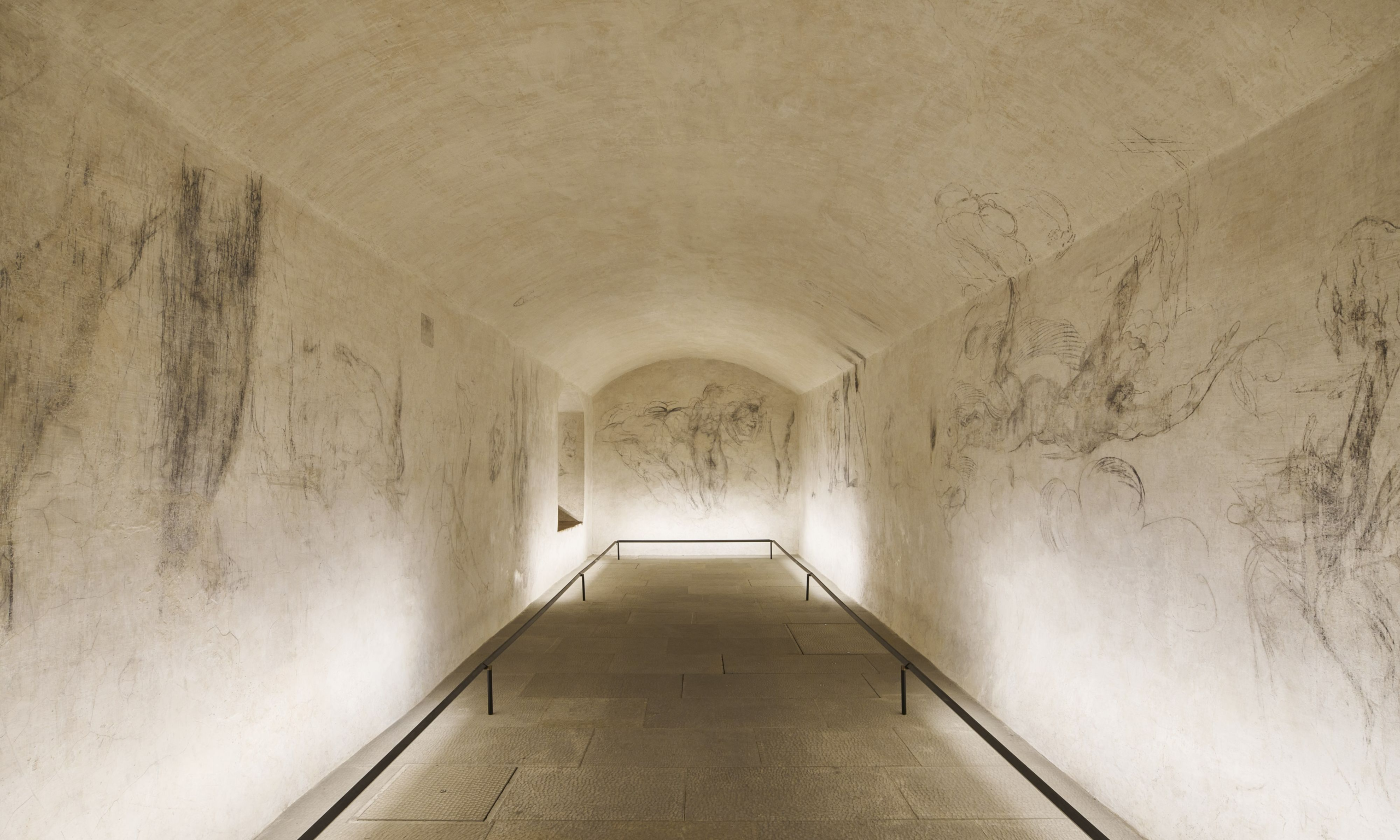Sketches include what may be a precursor the figure of Eve in artist's The Last Judgement (1535-41) fresco, housed in the Sistine Chapel
Photo: Francesco Fanfani
It’s perhaps the most sought-after ticket in the art world this week, and if you haven’t already secured your slot to see the Michelangelo secret room in Florence, you might be waiting a while.
The Bargello Museum, which runs the Medici Chapels under which the room is located, has sold virtually all available tickets to see the space, its walls lined with drawings thought to have been created by the Renaissance master. The works are believed to be from a period in 1530 when Michelangelo had to hide from Pope Clement VII, who had sentenced him to death for working for the republican government. The government had briefly taken the place of the Medici family, of which the pope was a member.
The room was discovered in 1975 during work to create a new exit for the Medici Chapels, home of some of Michelangelo’s finest sculptures. It was located in what later became a coal bunker accessed via a trapdoor, and had been unused since the 1950s. What builders and museum staff discovered—behind layers of paint, and damaged by mould and salt—took their breath away.
Over the past few decades the chance to see the works has only been given to art world professionals. From Wednesday (15 November), however, four members of the public an hour will be allowed into the room. So fragile are the drawings that they’ll be given only 15 minutes to admire them; the room is then plunged into darkness for 45 minutes before the lights go up for the next visitors. The public opportunity to admire the works is currently an experiment, with slots only running until the end of March.
The drawings are a breathtaking insight into not only Michelangelo's talents but also his story. It’s unclear, Bargello restorer Benedetta Cantini told The Art Newspaper at a preview, whether the artist was holed up in the room all the time or whether he made forays into the chapels above, which were already replete with his works. “There’s a well so he had a water supply, and there’s a window through which he could see what was happening on the street,” Cantini says. The discovery of the drawings, now almost half a century ago, was a “complete surprise”, she says, and most art historians have supported the attribution to Michelangelo.
The drawings themselves are a delightful jumble of faces, limbs and torsos. Some seem to have been him remembering works he’d already created, while others may have been blueprints for work he was yet to do. One nude, for example, may be a forerunner for the figure of Eve in artist's The Last Judgement (1535-41), which he created for Rome's Sistine Chapel after patching things up with the pope—adding to the famous ceiling he had painted previously. A set of legs, meanwhile, are reminiscent of the knees on the sculpture of Giuliano de’ Medici in the chapel above, which Michelangelo had completed a few years earlier. And one face may even be a Michelangelo self portrait, echoing a similar work held in the Casa Buonarroti, his one-time home and now museum, a few streets away.

